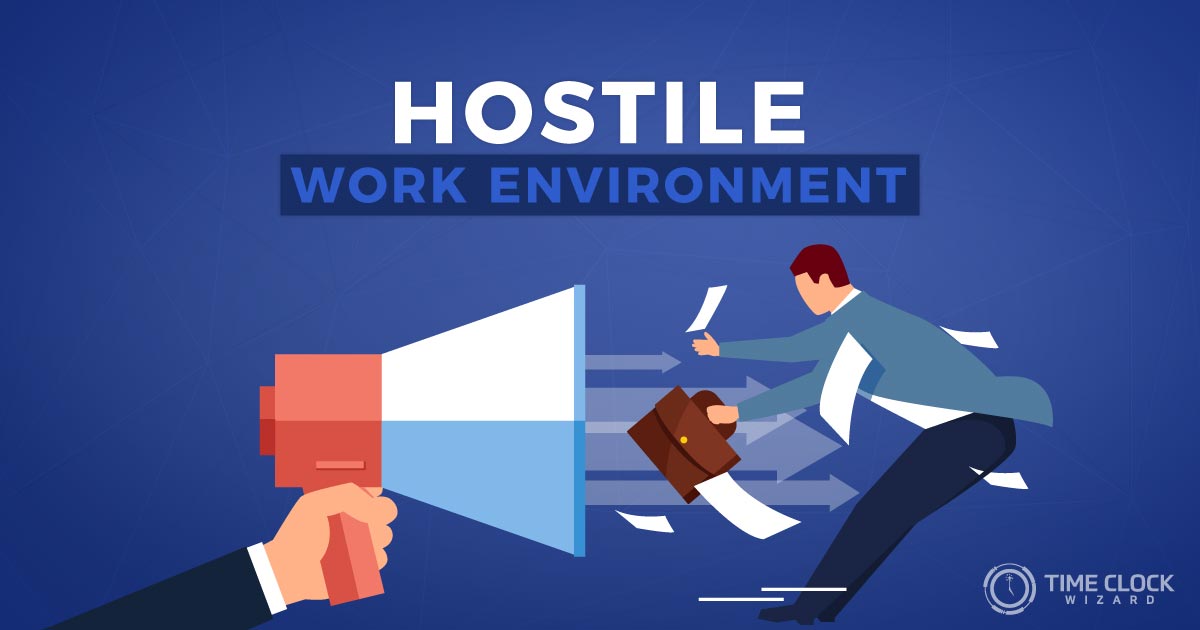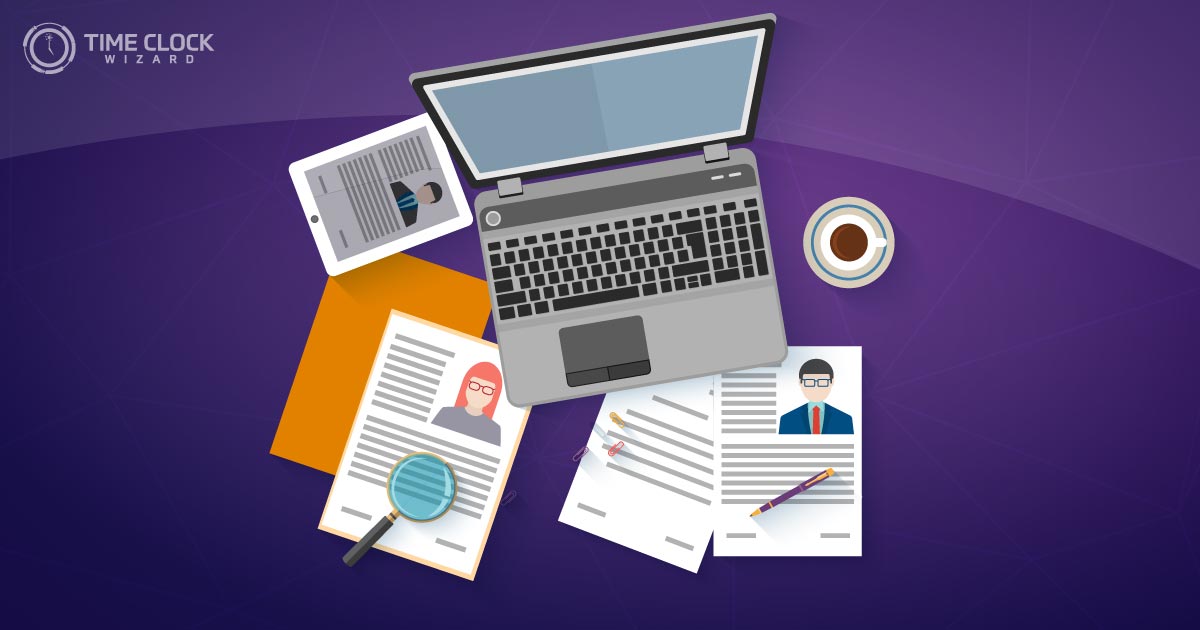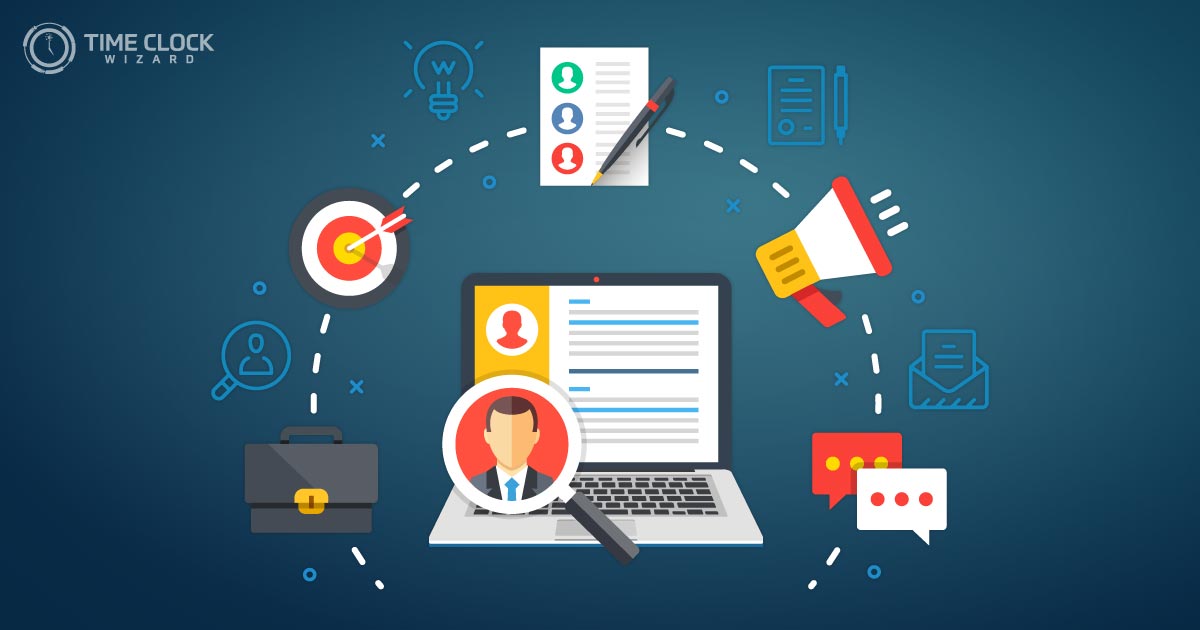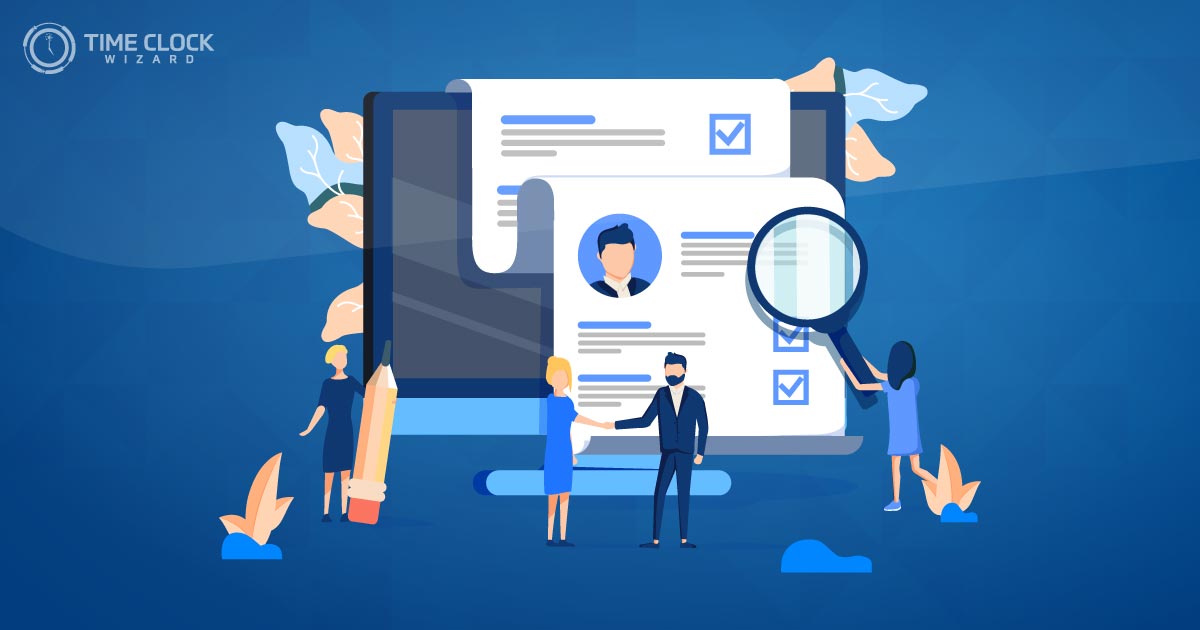
The role that a company’s human resources personnel plays is more important than most people think. Not only does human resource handle payroll and leave requests, but they also preserve company culture and oversee the employee’s entire lifecycle. In short, human resource acts as a company’s moral compass in addition to keeping employees well-trained, happy, and productive. Having a thorough understanding of human resource problems and solutions can be critical in a company’s success.
But needless to say, working in human resource (HR) poses a distinct set of challenges. Typically, these challenges come in the form of universal human resource problems and solutions. They’re usually present in all companies to some extent, while other businesses might suffer from greater deficiencies in certain areas. Either way, it’s up to you to meet these challenges directly and to solve these problems whenever they crop up.
Current Problems in Human Resource Management
Broadly speaking, best human resource problem-solving practices involve a two-pronged approach. First, you should develop a plan in advance. This plan should be comprised of programs, training, and other mechanisms that cut problems in the workplace off at their root. Second, HR personnel must remain vigilant at all times. That way, they can address stickier problems as your company grows. These practices might seem daunting at first, but they’re well worth the effort they require.
Some human resource problems are universal. These perennial problems are ones that every human resource department will encounter at one time or another. Other human resource problems are more specific and localized. These challenges are those that are particular to a given industry, company, or overarching cultural climate. Either way, it’s up to human resource personnel to come with creative strategies to solve them.
In fact, solving these problems is one of human resource’s most important functions. If not handled properly, human resource problems can stifle innovation, create large-scale team conflicts, and drag down productivity. Avoiding these difficulties is especially important in today’s fiercely competitive market. To succeed in this market, your company has to be firing on all cylinders. So the last thing you need is a constant parade of infighting and other disruptions. It’s for these reasons and more that human resource departments are so important in the contemporary workplace.
The purpose of this guide is to explore the current problems in human resource management you’re likely to encounter. First, we’ll talk about the attitude human resource personnel should bring into solving these problems. Then, we’ll discuss a number of specific problems and suggest ways you can address them.
Planning Ahead for Successful Human Resource Management
After our comprehensive discussion of the problems faced by employees at work, we’ll take a deep dive into the subject of advance planning. Human resource departments have no choice but to deal with employee problems on a case-by-case basis. That’s why this guide begins by discussing ways to solve very specific problems. But advance planning is also critical to solving human resource problems in a timely and effective manner.
So after we’ve discussed the problems mentioned above, we’ll describe some basic human resource tools you can use to reduce their frequency and severity in advance. First, we’ll talk about the importance of technology in the workplace and how human resource can leverage it to their advantage. Then, we’ll conclude our guide with an in-depth discussion of the multifaceted solutions that employee retention strategies can provide as you go forward.

Approaching Human Resource Problems and Solutions
Solving the problems faced by employees at work starts with the right attitude. Human resource departments must expect certain problems to arise and be prepared to deal with them. You might not know the exact details that will be involved, but don’t be surprised when problems appear. In other words, you must take the subject of human resource problems and solutions seriously. Otherwise, you’re sure to encounter great difficulties down the road.
Human resource problems always require the rigorous practices we mentioned above, but it will definitely prove worth it in the end. Without the vigilance and constructive effort that human resource problems require, your company will be exposed to a variety of commercial problems. When these practices are in place, however, your employees will be in the ideal position to focus on their work and raise your company’s ceiling.
In the next sections, we’ll address the most current issues in human resource management and detail the ways you can resolve them.
Sexual Harassment in the Workplace
Sexual harassment in the workplace is a perennial challenge for human resource departments. Unfortunately, it’s been this way for decades. Fortunately, the public sphere has paid much more attention to it in recent years. Morally, this extra attention is definitely a good thing. It goes without saying that no one should ever feel sexually harassed in the workplace.
Additionally, it’s only the frequency with which harassment is reported that’s risen, not the incidents themselves. As a result, sexual harassment in any form is something companies just can’t allow. This is a trend we’ll put in the win column for people of all genders, but it does present human resource with a number of new challenges.
Companies must now do everything in their power to prevent sexual harassment. Further, they have to address these incidents promptly and firmly every time they come up. Failure to do so can result in a number of negative consequences. Companies who aren’t vigilant enough open themselves up to the following negative outcomes:
- Lawsuits and other legal difficulties
- Charges from the Equal Employment Opportunity Commission
- Negative coverage in various press outlets
- Irreparable harm to the company’s public reputation
Needless to say, human resource departments have every reason in the world to prevent sexual harassment and nip it in the bud whenever it comes up. Let’s have a look at how human resources can do to accomplish this.
Best Human Resource Problems and Solutions for Combating Sexual Harassment
Protecting your employees from sexual harassment is both a moral imperative and a legal necessity. Entire books have been written on how to reduce or eliminate sexual harassment, but here are the practices we suggest as a starting point:
- Take complaints seriously and investigate them to the best of your ability.
- Strive for diversity in company leadership and other positions of power.
- Encourage staff members of all genders to speak up if they witness incidents of sexual harassment.
- Promise confidentiality to victims of sexual harassment and to those who report it.
- Make sure everyone is thoroughly familiar with your company’s policies regarding sexual harassment. You should also update them on any changes.
- Post these policies conspicuously throughout the workplace.
- Create multiple channels through which employees can file complaints.
- Assign a trusted HR staff member to oversee the handling of the complaint from start to finish.
- Have procedures in place for investigating complaints and make sure they’re followed.
- Consult with an attorney who specializes in sexual harassment law during your investigation.
- Consult with other HR personnel before making any final decisions.
- If you decide that sexual harassment has occurred, take the appropriate disciplinary actions swiftly.
Again, this is by no means a complete list. To provide the protection your employees deserve, educate yourself further on the subject of sexual harassment and alter your policies and procedures as you see fit.
Workplace Diversity Issues
Diversity is one of the most commonly talked about human resource problems and solutions, but that doesn’t mean HR departments automatically have a handle on it. However intuitive the concept of diversity might seem, truly understanding it requires a great deal of effort. This is especially true if you want to apply the concept of diversity in practical, real-world terms.
Diversity is a hot-button topic in every corner of contemporary life and the workplace is no exception. You hear a lot about workplace diversity and inclusion these days. In fact, people throw these terms around all the time. Unfortunately, they don’t always know what they mean. That’s why it’s important to be very precise when talking about either of these important terms. First, let’s have a look at what workplace diversity means in actual practice.
What Exactly is Workplace Diversity?
Workplace diversity might seem like a pretty vague term in some ways, but we can definitely formulate a precise definition. First, a diverse workplace is one that embodies the principles of inclusion. It accomplishes this by going beyond the mere acceptance of difference by understanding its value and embracing the various points of view it brings it to the conference table. Perhaps most importantly, a diverse workplace provides equal opportunities for all employees, regardless of their race, color, gender, sexual orientation, nationality or religion.
These conditions let each employee make unique contributions to their workplace and vastly improve internal and external relationships. These relationships help connect employees with customers and the community in a positive way. Workplace diversity provides many other benefits as well. We’ll discuss these in the next section.
The Benefits of Workplace Diversity
Enhancing the diversity of your workplace is more than just the right thing to do. It’s also more important than simple compliance. In addition to these necessary goals, increased diversity provides tangible benefits as well. We’ll take a look at these benefits in just a moment. But first, it’s important to keep in mind the kind of competition you’re up against today.
The companies in your industry sector — your competition– typically have an enormous amount of resources at their disposal. We live in an economy that becomes more globalized with each passing day, and that means companies have a vast talent pool to choose from. To keep up, you’ll have to get the absolute most of your people. And one of the best ways to accomplish this is by employing a workforce that’s as diverse as possible.
Now here are ten of the most significant benefits of a diverse workforce:
- Multiple perspectives on company challenges
- Improved collaboration
- Increased knowledge of an industry market sector
- Better teamwork
- More effective problem solving
- A more stimulating work environment
- Increased levels of creativity and innovation
- Better overall team performance
- Easier entry into new markets
- Increased revenue and profits
This list should give you a decent idea of how workplace diversity can benefit your company. Now, it’s just a matter of achieving the optimal level of diversity in a way that’s both compliant and productive. In the next section, we’ll discuss several ways HR departments can create and maintain workplace diversity.
Fostering Diversity in the Workplace
Inclusion and diversity are non-optional qualities in today’s workplace. Unfortunately, neither of these things come about on their own. They must be an explicit part of a company’s mission statement and factor into their collective decisions. They also must play an active role in a business’s everyday practices and standard operating procedures. In order to help HR departments bring all this about, here are five tips for creating diversity in your workplace:
- Talk about diversity with your staff frequently. Emphasize the benefits companies accrue when they have an inclusive workplace.
- Work with your employees to pinpoint and correct any unconscious biases they might have.
- Examine your recruitment and promotion policies. Make sure they don’t prevent particular groups of people from achieving success in your company.
- Encourage your team to recognize and acknowledge the value of a diverse workforce. Explain how language skills and international perspectives can aid productivity.
- Make sure that all employees have flexible work options. This should include applying the same leave policies across the board.
- Educate yourself on diverse cultural practices and make necessary adjustments whenever possible.
- Take action to protect all employees from discrimination in the workplace.

Hostile Work Environment
The following is a scenario that everyone in HR has dealt with at one time or another. A company receives multiple complaints about employee working conditions in a short space of time. Maybe employees insist that their supervisor consistently behaves in an unprofessional or abusive way. Or perhaps the complaints involve a co-worker, vendor, or customer. In any case, the complaints are too serious to ignore and HR has to investigate.
The key phrase here is ‘hast to.’ A certain amount of work frustration is to be expected. Ditto the occasional office dust-up or disgruntled employee. But if the complaints are serious enough, HR has no choice but to address them quickly. This is especially true if the nature of the complaints suggests the existence of a hostile work environment.
A hostile work environment is one of the most difficult problems for HR departments to confront. The first challenge is trying to decipher the complaints you’re received. Are they evidence of systematic maltreatment within a given department? Or do they stem from isolated incidents like personality clashes, arguments, or everyday work stress? Either way, it’s up to HR to find out what the root of the problem is and get busy solving it.
In this section, we’ll discuss the conditions that contribute to a hostile work environment and how to go about fixing them.
What is a Hostile Work Environment?
You’ll need to know what a hostile work environment actually is before starting to fix it. Unfortunately, difficulties arise when you try to define a hostile work environment in strictly legal terms. Some states do have explicit legislation that outlines and forbids hostile work environments, but no such federal laws currently exist. At the federal level, the closest we can come is the Equal Employment Opportunity Commission’s (EEOC) rules against general harassment. That’s why for the possible legal ramifications, we suggest you obtain the pertinent information from your company’s legal department.
In the absence of a specific legal definition, we’ll work from a set of criteria that is often used to classify a workplace as hostile. We’ll get these in a minute, but first let’s have a look at what does NOT constitute a hostile work environment:
- General unpleasantness
- Minor annoyances
- Isolated incidents of mild rudeness
- An ineffective or bad boss, unless their actions turn into some form of harassment
- Irritating or lazy co-workers
- Occasional conflicts
- Being overworked and/or overpaid
- Deep unhappiness with one’s job
While none of these things contribute to a positive work situation, more is typically required to classify a workplace as hostile. As an HR representative, you might want to address some or all of these things, but not for legal reasons.
When Things Go From Bad to Worse
A truly hostile work environment is one where offensive or unwanted behavior consistently makes employees feel so frightened, uneasy or intimidated that it becomes nearly impossible to fulfill their duties. That being said, at what point does a workplace go from being unpleasant to counterproductively hostile? Again, this is a rather subjective question, but here are some guidelines HR personnel can use in their assessment:
- The negative behaviors must discriminate against certain groups of employees.
- This discrimination must be based on their race, color, nationality, gender, religion, or disability.
- The behaviors must be unwelcome. This means that the individual has been asked to stop the harmful behavior but refuses to do so.
- The actions in question cannot be limited to one or two incidents. They must go on for an extended period of time and become pervasive to qualify as hostile.
- The situation must be consistently severe. This means that the accused person(s) must act or communicate in a way that has an objectively negative impact on an employee’s work.
Specific Behaviors that Contribute to a Hostile Work Environment
For the most part, the above guidelines deal with the severity and frequency of hostile work behaviors. With that done, we can discuss some of the specific behaviors that can make for a hostile work environment. If not effectively addressed, here are some of the actions that make a workplace truly hostile:
- Verbal harassment through name calling, inappropriate jokes, or degrading forms of communication that the bully refuses to stop
- A supervisor firing an employee for refusing their sexual advances or rewarding those who cooperate with them
- Denying an employee a promotion for refusing sexual advances
- When a co-worker or supervisor consistently interferes with an employee’s work or makes hostile physical contact with them repeatedly
These behaviors are a sure sign of a hostile work environment. But as you can see, there’s a fine line between general unpleasantness and true hostility. However, it’s still up to HR departments to investigate these types of complaints and take appropriate action. Next, we’ll take a look at what you can do when confronted with the possibility of a truly hostile work environment.
Repairing the Damage
If an employee (or group of employees) files a complaint with your HR team about a hostile work environment, there are steps you should start taking immediately:
- Take each complaint seriously
- Investigate the claim thoroughly
- During the investigative stage, listen closely to all sides of the story
- If unacceptable behavior comes to light, set up consequences for further offenses
- Come up with a plan to resolve the issues at the root of the conflict
- Follow up with all concerned parties and monitor the situation until it’s resolved
The most important thing is to address the situation as quickly as possible. That way, you can help everyone refocus on doing their jobs and avoid the possibility of time-draining, costly lawsuits. Lastly, it’s also a good idea to take preemptive action to prevent the behaviors that can create a hostile work environment. For best results, arrange annual or bi-annual training sessions and make everyone fully aware of your employee conduct policy.

Human Resources and Technology in the Workplace
Technology has transformed the way HR departments go about their daily business. It has changed the way HR personnel stay in contact with their employees and assess their performance. Technology has also changed the ways in which HR stores important information and maintain their record keeping system.
Depending on how the technology is used, it can either make HR’s work more efficient or get in the way. By using technology wisely, HR personnel can work more efficiently and position themselves to be of maximum use to their company. In the following sections, you’ll read about how to leverage HR technology effectively.
Time and Attendance Management
Managing employee attendance is an important part of any HR department’s daily work. Companies need to know where their people are and how they’re using their time. With proper time and attendance management, HR departments can eliminate costly inefficiencies and maximize employee productivity. And while this can be a challenging set of tasks, there’s technology out there that can help.
An attendance tracker is one of the most effective HR tools in this regard. Attendance trackers have replaced the clumsy punch clocks of old with sophisticated systems that generate and store important attendance information. Additionally, this data can be exported easily into payroll systems and eliminate traditional human error. Attendance trackers can also process other types of data and present in a number of convenient formats.
The end results of using this technology are truly impressive. High-quality attendance trackers provide seamless integration, easy access, and error-free payroll generation. They can also be customized to fit the industry needs of your company. Highly adaptable, accurate, and user-friendly, the right attendance tracker will go a long way toward simplifying HR’s daily monitoring duties.
Human Resources and Employee Retention
Employee retention plays a huge role in the success of your business. In fact, there’s nothing more important than keeping skilled people in the company fold. We’ve spent a great deal of time discussing specific resource problems and solutions, but you’ll soon see that an effective retention strategy is one of HR’s most useful assets.
As you’ll read in the next several sections, we place a lot of emphasis on employee retention. The reason? Because a good employee retention strategy can help destroy the foundation of many of the problems HR departments deal with in the first place. While certainly not a cure-all, effective employee retention will help create an environment where HR problems are less likely to occur. Similarly, it will foster the levels of teamwork, mutual concern, and unity that are so necessary for solving problems that do occur.
Next, let’s have a quick look at the more specific benefits of keeping great employees on board..
The Benefits of Employee Retention
At an intuitive level, you probably have a pretty good idea why employee retention is so important. Nevertheless, a deeper understanding will be of great benefit to human resources departments. Here are five key benefits to retaining talented and motivated people:
- Reduces the negative impact of high rates of employee turnover
- Improves Overall Productivity and Performance
- Makes it easier to recruit new talent
- Increases employee morale
- Lower overall costs, especially in recruitment and training
- Higher long-term profits
Of course, this is only a small sampling of what good employee retention helps you accomplish. Simple common sense should tell you why it’s a good idea to keep your most talented people. The only real question is how HR departments can actually make it happen. We’ll have a look at strategies for employee retention in the next section.
Strategies for High Rates of Employee Retention
It’s a nightmare scenario when one of your best people leaves unexpectedly. Immediately, you face a number of difficult challenges. First, you have to seek an adequate replacement. This is hard enough all by itself, but you also have to reduce the impact the departure has on your remaining staff.
That’s why having a comprehensive employee retention strategy in place is so crucial. Not only do they help keep your top talent on board, but they also reduce the chaos that often ensues after key departures. Human resources departments ignore the aftereffects of key departures far too often. Good employee retention strategies give you a great deal of help in this regard. First, they reduce the number of good employees who end leaving your company. And when these key people do leave, retention strategies help ease what is often a difficult transition.
Obviously, you want to retain your best people as long as you can. But keeping talented employees on board can be tricky. There are several reasons for the difficulties involved, but a good retention strategy can address many of them simultaneously. Hopefully, you recognize the need for an effective retention strategy by now. All that remains is understanding how to create one.

The Elements of An Effective Retention Strategy
Retention is an extension of employee recruitment and an important part of managing your talent. It’s also one of the chief functions of HR departments in general. In other words, the task of keeping good people falls to you. Unfortunately, employees don’t stay with a single employer as long as they once did.
So how does HR go about retaining talent in such an environment? The answer lies in the creation (and maintenance) of effective employee retention strategies. And while these strategies require time, effort, and thoughtful planning, no company can afford to lose their most valuable assets.
An employee retention strategy is a set of policies designed to reduce turnover and keep employees productive over the long term. Many different aspects of the work environment factor into retention strategies. We’ll cover nine of the most important elements of retention strategies in the next several sections.
1. Strategic recruitment and hiring procedures
In order to be successful, a retention strategy has to be active from the beginning of an employee’s tenure. First, you have to hire people who fit in and have complementary skill sets. This means locating and recruiting talent that blends well together. The ideal blend of skills can vary greatly depending on your company’s needs. To achieve it, HR should be in constant communication with department heads and listen closely to their feedback.
Hiring people who ‘fit’ is a different story. First, you need to understand that ‘fitting in’ has nothing to do with conformity. In some ways, it’s actually the exact opposite of conformity. Here, the right ‘fit’ is someone whose personality meshes with the rest of the team and shares your company’s overall values. You can locate these people during the interview process. First, a simple personality test will help you decide if a given candidate is right for the position in a psychological sense.
Hiring people who share your company’s values is essentially a two-part process. First, make sure your prospect has a copy of your company values and mission statement. Then, use the interview process to find out if the candidate is likely to buy into your company’ vision. Strive for this balance from the very start and retention will be that much easier.
2. Onboarding new hires with an eye toward long-term retention
First impressions matter, especially in the workplace. That’s why, during the onboarding period, HR should focus on helping new hires get comfortable as soon as possible. Make your employees feel welcome right away by introducing them properly co-workers, showing them around, and familiarizing them with your company’s general procedures. For best results, also take the time to your company’s shared values and show your new hires how you put them into practice in the workplace.
The onboarding process is also a great time for HR to instruct new hires on the business’s various channels of communication. This will show them where to go for any information they need and increase feelings of independence. All in all, onboarding is when you set the tone for an employee’s initial experiences with your company. This initial period is when employees begin to form perceptions about their future with your company, so it’s in your best interests to get off on the right foot.
3. An emphasis on training and career development
People tend to stay at jobs that offer opportunities for advancement. Even if they don’t consider their new position a ‘destination job,’ they’re still more likely to stick around if they have access to the type of training that will enhance their career development. Either way, you’ll accomplish several things at once by focusing on your employees’ future development.
First, they’ll build on their skill set and be in a better position to help your company. Second, advanced training will help keep your new hires engaged and keep up their morale. In short, putting an emphasis on training and career development makes for better employees. And this holds true no matter how long end up working for your company.
In the best case scenario, a great employee has a long tenure with your company and reap the benefits of their training directly. But even if they leave after only a short time, the resources you spent training them will still pay dividends later on. When people leave a position, they inevitably talk about their former employers. Focus on your employees’ career development and you’ll become that much more attractive to future talent.
Training and career development are overlapping areas, both of which are invaluable for employee retention. Training on your company’s specific tech tools and standard operating procedures should begin during onboarding. Eventually, this training should extend to seminars and workshops outside your company.
Career development overlaps with employee training in some ways but is also distinct from it. It involves giving new hires opportunities for internal advancement. Additionally, employees should learn teamwork skills that make them attractive throughout your industry sector. HR departments would be well advised to work towards these goals simultaneously.
4. Using mentorship to ease the transition
No matter how talented they are, some people have a difficult time transitioning into a new position. There are so many things to get used to that even your best employees might experience some initial difficulties. These difficulties vary from person to person, but mentorship programs are a great way to help new hires navigate them smoothly.
Essentially, mentorship means pairing new hires with veteran employees who can help them get used to their new environment in an informal way. Typically, the mentor helps the new hire develop positive relationships with their co-worker and teaches them about your company’s standard operating procedures. Mentorship should begin during the onboarding process, preferably immediately after the new hire starts to work for you.
Mentorship helps both parties. Mentors give new hires the individual attention they need to get comfortable and feel cared about. They also jump-start the new hire’s career development by integrating them into your company’s culture. The mentor benefits because the new hire provides them with a fresh perspective and makes them feel more valuable to the company.
5. Giving fair and consistent performance evaluations
Regular performance evaluations are a great way to make employees aware of their strengths and limitations. They also show that you’re concerned with their individual development and advancement opportunities. Perhaps just as importantly, regular evaluations convey a sense of commitment and professionalism. They show employees that you’re fully aware of what’s happening (or not happening) within your company and that you’ll go to any lengths to get everyone up to speed.
These evaluations should be fair, impartial, and standardized. They should also assess performance according to previously set goals. This will ensure that your employees understand the criteria you’ll use to evaluate their performance. It will also help you give them specific and constructive feedback.
When conducting performance evaluations, HR personnel should be open, honest, and thorough. They should also listen to what employees have to say in response. The most effective evaluations include feedback on areas of both strength and weakness. They also provide very specific counsel on how employees can improve on their weaknesses. Lastly, deadlines are often very helpful in the evaluation process. For best results, insist that your employees reach certain benchmarks of improvement within a reasonable timeframe.
When your employees know how they’re doing, they understand the areas where they need work. They also start to understand how to leverage their strengths for optimal development. Regular performance evaluations benefit both parties and can play a key role in holding onto your talent.
6. Offering Competitive Salaries and Benefit Packages
Offering your team members an attractive compensation package is essential to any effective retention strategy. Today’s employee might value things like career development more than they used to, but a competitive salary and benefits package is still non-negotiable.
It goes without saying that a good salary is of utmost importance. The same holds true for adequate health coverage and vacation time as well. But to maximize their chances of keeping key people, many companies are willing to go the extra mile. These companies offer attractive retirement plans and other perks to make their workplace more attractive.
7. Open channels of communication within the company
Good communication is an absolute must for high rates of employee retention. Employees will only stay with a company if they feel like they can come to you with their questions, concerns, and ideas. It’s also important you respond appropriately, but it all starts with open lines of communication.
You should establish a precedent for good communication from the beginning of an employee’s tenure. Then, it’s important to follow the precedent you set with consistent follow-up. This means HR personnel should connect with individual staff members as often as possible. For best results, go above and beyond what’s formally required of you. In other words, don’t just contact your staff when something goes wrong or you need them to update a form. Reaching out for its own sake is one the best ways to open up communication and tell people you’re available.
8. Consistent employee recognition
It’s just human nature– everyone wants to feel appreciated for the work that they do. And for most people, this means more than just a paycheck every week. It means being recognized on a consistent basis for accomplishments both big and small. Recognition from supervisors also fosters a sense of belonging. This sense of belonging is one of the most significant factors in employee retention and is definitely worth the time it takes to create.
So go out of your way to recognize your employees. You can do this with a simple congratulatory email, extra time off, or an inexpensive gift. People also tend to respond well to verbal encouragement and praise. Whatever you do, be sure to let your employees know that you notice what they do for you and your company on a daily basis. It’s actually a lot easier than it might sound and you’ll be pleasantly surprised by the results.
9. Delivering a positive offboarding experience
The offboarding process also plays a key role in an employee retention strategy. Employee departures are a natural part of doing business, but it’s still in your best interests to make the experience as positive as you can. For the purpose of retention strategies, it might help to think about offboarding from two different perspectives.
First, consider things from the departing employee’s perspective. No matter why an employee leaves, you can bet they’ll talk to people about how they were treated along the way. It’s also safe to assume that they’ll talk to people in your industry about it. The implications of this should be pretty clear. A departing staff member’s perspective on how they were treated can have a profound effect on your ability to acquire top level talent. And this effect can be a positive one if you manage the offboarding process well.
Lastly, the departure of key personnel often leads to a state of chaos among your remaining employees. They might start to worry about their own future with you or become overly distracted. Loyalty and employee morale can be damaged if you don’t handle the onboarding process in the proper way. Losing a key team member is bad enough on its own, much less dealing with more widespread negative effects.
Tips For Implementing an Effective Employee Retention Strategy
Here are twelve additional tips for the creation of an employee retention strategy that will cut off many human resource problems at the root:
- Make your expectations clear immediately and formulate clear policies for employees to follow
- Put in the necessary efforts to develop a supportive company culture
- Advise employees on achieving a healthy work-life balance
- Give your employees meaningful work to do and explain how it connects to your company’s overall vision
- Be fair and equitable in the distribution of internal and external training opportunities
- Challenge your team members without overburdening them
- Conduct exit interviews whenever an employee leaves to find out what does and doesn’t work for your people
- Listen to your employee’s concerns and be prepared to adapt to them when necessary
- Allow employees to work in leadership roles on a rotating basis
- Give and receive constant feedback
- Pay attention to employee morale and take action whenever it begins to sag
- Make room for a little workplace fun
The importance of an effective employee retention cannot be overemphasized. Having such a strategy in place will help your company in many areas, not the least of which is human resource problems and solutions. That’s why we’ve covered the subject so extensively in this guide– to show you that the effort involved is more than worth it over the long haul.

The Importance of Human Resource Now and Going Forward
HR departments are more important today than they’ve ever been in the past, especially in our fiercely competitive global economy. HR departments are staffed with the facilitators, mediators, and efficiency experts that keep a company running smoothly. This makes it easy to see why a well-trained HR department is one of the wisest investments a company can make. In addition to the role they play in employee recruitment, hiring, and training, HR personnel also help resolve the inevitable team conflicts and keep companies compliant.
HR departments are central to everything a company does, both internally and externally. They act as the liaison between management and staff while protecting the interests of their company. HR personnel plays a critical moral role as well. They protect employees from possibly abusive situations, provide direction during difficult times, and help maintain a positive work culture.
And the importance of HR departments will only increase in coming years. The need for effective teamwork will continue to grow as the economy expands into different parts of the globe, and HR is one of the chief engines of this necessary collaboration. But like the old saw says, enormous responsibilities accompany this importance. This reality will require HR departments to stay at the bleeding edge of the management tools and techniques so necessary for their companies’ survival. It is our sincere hope that this guide will prove useful to HR departments now and going forward.




